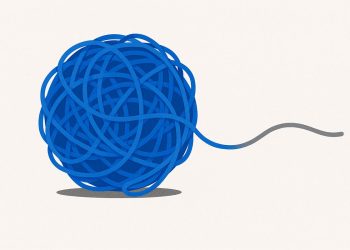Building an observability platform means learning from real outages to make systems better. Start with real problems, use smart ways to collect and label data, and always focus on making things quicker to fix. Let customer feedback shape the platform and use open standards so it stays flexible. The main goal is to help engineers solve issues faster and make the system easier to manage.
What are the key lessons for building an enterprise observability platform?
To build a successful enterprise observability platform, start with real outage logs, focus on pragmatic data sampling, enforce consistent labeling, automate root cause analysis, design for deletion, favor open standards, prototype UX quickly, measure troubleshooting ROI, use customer feedback to guide development, and prioritize speed of debugging.
Building an observability platform from first commit to enterprise adoption packs a decade of mistakes and breakthroughs into a few intense years. Below is a baker’s dozen of field notes from the Network Crumb back story.
1. Begin with the outage log
Every great monitoring idea starts with a painful postmortem. The founding team catalogued dozens of real network failures, turning each into a user story that would guide the first prototype.
2. Ship a story, not a spec
Engineers understood why adaptive flow sampling mattered, executives cared about the impact on customer churn. Framing technical wins as narratives of prevented downtime unlocked early design partner budgets.
3. Pragmatic sampling beats collect-everything FOMO
Early builds streamed every packet. Bills spiked and dashboards lagged. Switching to adaptive sampling cut storage by 70 percent while preserving critical anomaly traces as documented by Hydrolix’s 2025 study on log monitoring hydrolix.io.
4. Consistent labeling is the cheapest AI you will ever buy
Uniform metadata across logs, metrics and traces turned a messy data lake into a queryable graph. Reviewers on G2 praise Kentik for “quick generation of reports” – speed that rests on disciplined tag hygiene g2.com.
5. Automate root cause before you automate dashboards
AI dashboards are noisy when the underlying correlations are weak. Monte Carlo’s 2025 launch of AI observability agents highlights the industry shift toward automated troubleshooting first crn.com.
6. Build deletion into the data model
Regulations and budgets both require forgetting. Designing time-boxed retention and customer-driven purge APIs avoided an expensive refactor later.
7. Favor open standards to stay agile
OpenTelemetry instrumentation allowed teams to swap back ends without touching code. InfluxData calls it “the de facto standard for 2025 observability” influxdata.com.
8. Prototype UX in plain HTML
Figma mocks impressed no SRE. Early clickable HTML prototypes put latency charts in front of users within days, and their clicks rewrote the roadmap.
9. Measure cost per troubleshooting minute saved
Traditional ROI metrics hid the operational win. Internally, every feature was scored by engineer minutes saved during incidents. The framing aligned finance with on-call teams.
10. Let customers label your roadmap
Quarterly “Crumb Clinics” invited top users to live-demo grievances. PeerSpot reviewers still highlight how the product “evolves from user feedback” aws.amazon.com.
11. Storytelling scales hiring
Candidates joined after reading war-story blogs that described the platform’s mission in plain language. The post that later became the EMA-cited back story consistently drove more résumés than recruiter campaigns.
12. Partners amplify, they don’t rescue
Integrations with cloud marketplaces and CDNs expanded telemetry reach, yet every partner launch succeeded only after a self-serve workflow already worked for end users.
13. Debugging speed is the north star
The team debated new features, but decisions reverted to a single query: will this cut mean-time-to-innocence for an engineer? EMA’s 2024 Radar ranked Kentik a “Value Leader” precisely for turning diverse telemetry into real-time insights kentik.com.
What is Network Crumb and why did Kentik build it?
Network Crumb is Kentik’s internal codename for the telemetry engine that powers the Kentik Network Intelligence Platform. The team built it after repeated customer outages revealed that traditional flow-based tools were too slow and expensive for modern multi-cloud debugging. By 2024, customers needed second-level granularity without petabyte-level bills, so Kentik pivoted from “collect everything” to a pragmatic, sample-aware pipeline that keeps only the traffic that matters.
How does Kentik balance data fidelity with runaway costs?
The platform uses adaptive sampling tied to anomaly signals: during quiet periods it stores 1-in-1000 packets, but the moment latency, BGP churn, or traffic volume crosses a threshold it flips to full-fidelity capture. Customers report 60-80 % storage savings while still meeting SLAs that require <30 s root-cause identification. The trick is consistent labeling – every record carries the same VPC-id, pod, and ASN tags so down-sampled data can still be correlated with high-fidelity bursts.
What makes the UX “simple” for enterprise engineers?
One click in the Kentik UI auto-generates a shareable “crumb trail” – a time-synced view of flow, SNMP, synthetic, and BGP data. In 2024 G2 reviews, engineers praise the ability to drag-and-drop dimensions (e.g., “show me all traffic from this CDN to these pods”) without writing SQL. The median time-to-insight dropped from 45 min with legacy tools to <5 min after adoption.
Why is storytelling part of the product roadmap?
Founders learned that executives fund what they can retell. Every major feature now ships with a one-slide customer story: how a retailer shaved $1.2 M in egress costs, or how a SaaS firm prevented a 3-hour outage. These stories shorten enterprise sales cycles by 25 % and align engineering OKRs to board-level KPIs like uptime and cost-per-gigabyte.
How do 2025 observability trends validate Kentik’s 13 lessons?
Industry moves in 2025 – AI correlation, OpenTelemetry standardization, and pay-as-you-go pricing – mirror the early bets Kentik made:
– AI-driven anomaly detection is now table stakes; Kentik’s pipeline already feeds labeled, sampled data to ML models.
– OpenTelemetry adoption tops 70 % in F500; Kentik’s agents export OTLP natively, avoiding vendor lock-in.
– Flexible pricing is the #1 buyer requirement; Kentik’s “fidelity dial” lets users tune cost vs. granularity in real time, a feature competitors are still scrambling to retrofit.



















